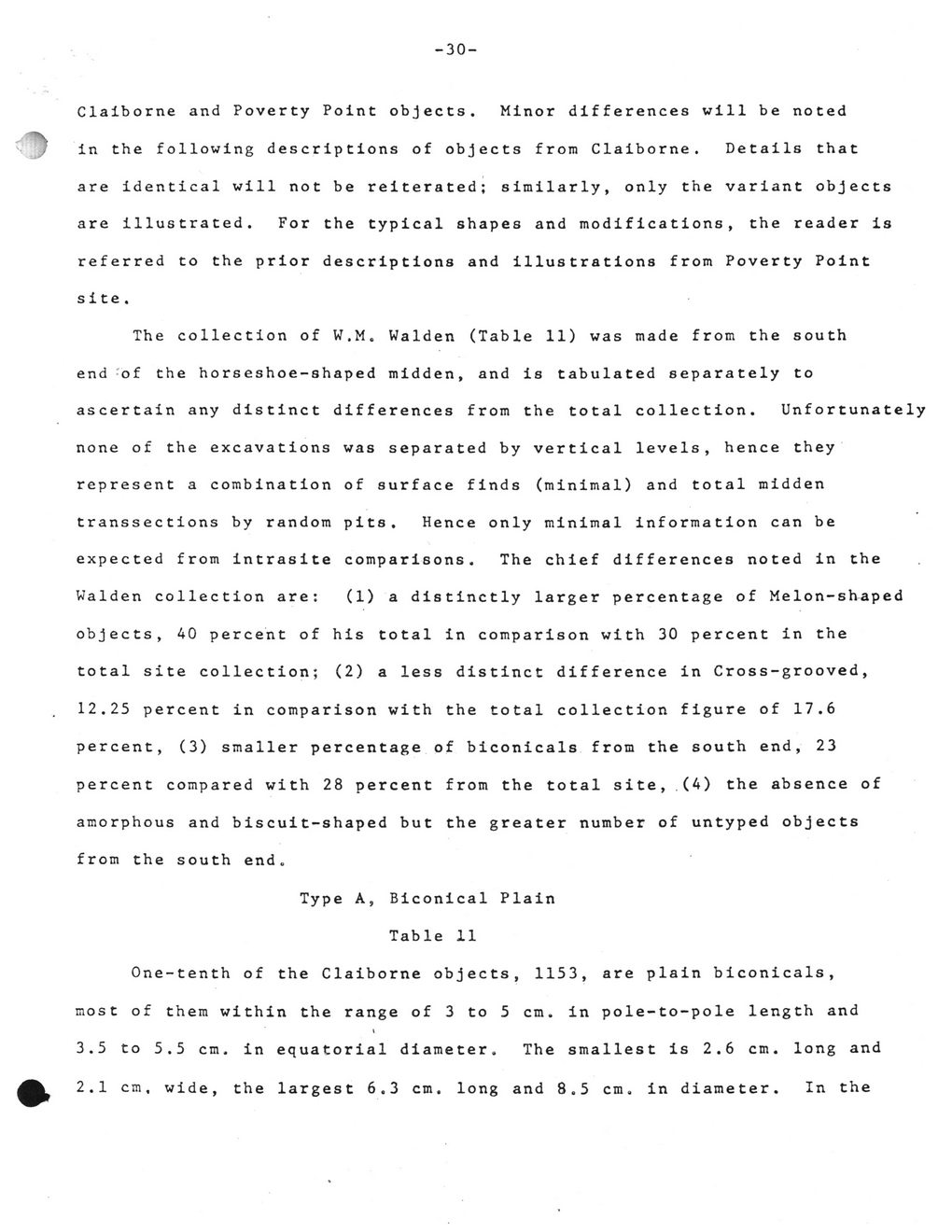This text was obtained via automated optical character recognition.
It has not been edited and may therefore contain several errors.
Claiborne and Poverty Point objects. Minor differences will be noted in the following descriptions of objects from Claiborne. Details that are identical will not be reiterated; similarly, only the variant objects are illustrated. For the typical shapes and modifications, the reader is referred to the prior descriptions and illustrations from Poverty Point site. The collection of W.M. Walden (Table 11) was made from the south end of the horseshoe-shaped midden, and is tabulated separately to ascertain any distinct differences from the total collection. Unfortunately none of the excavations was separated by vertical levels, hence they represent a combination of surface finds (minimal) and total midden transsections by random pits. Hence only minimal information can be expected from intrasite comparisons. The chief differences noted in the Walden collection are: (1) a distinctly larger percentage of Melon-shaped objects, 40 percent of his total in comparison with 30 percent in the total site collection; (2) a less distinct difference in Cross-grooved, 12.25 percent in comparison with the total collection figure of 17.6 percent, (3) smaller percentage of biconicals from the south end, 23 percent compared with 28 percent from the total site, (4) the absence of amorphous and biscuit-shaped but the greater number of untyped objects from the south end. Type A, Biconical Plain Table 11 One-tenth of the Claiborne objects, 1153, are plain biconicals, most of them within the range of 3 to 5 cm. in pole-to-pole length and i 3.5 to 5.5 cm. in equatorial diameter. The smallest is 2.6 cm. long and 2.1 cm, wide, the largest 6.3 cm. long and 8.5 cm. in diameter. In the

Walden 038